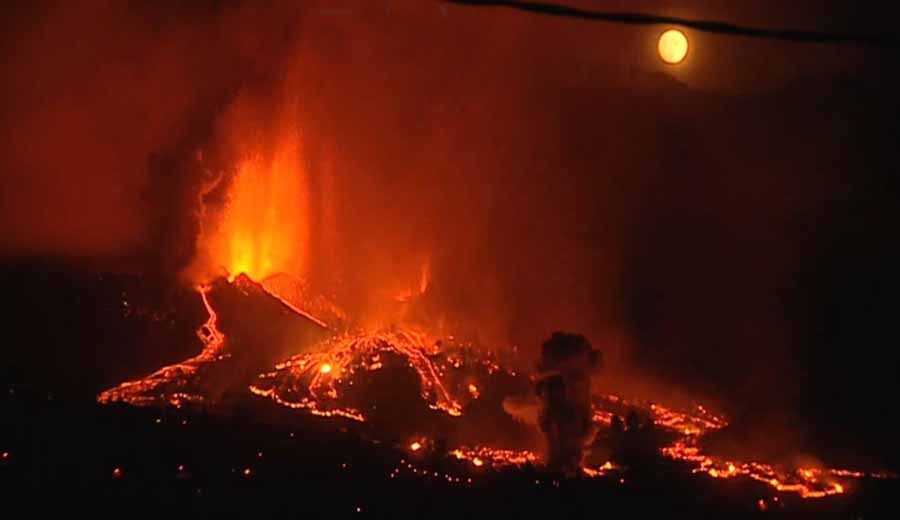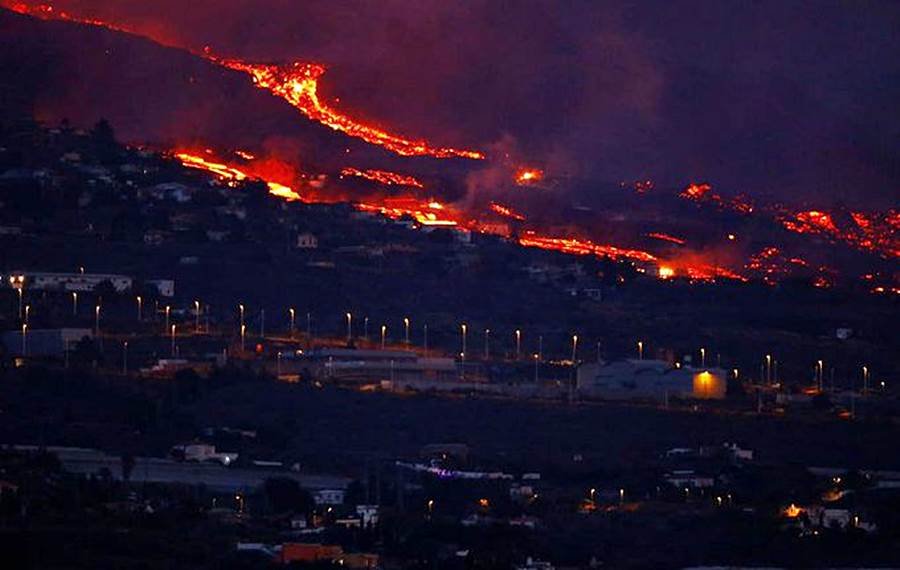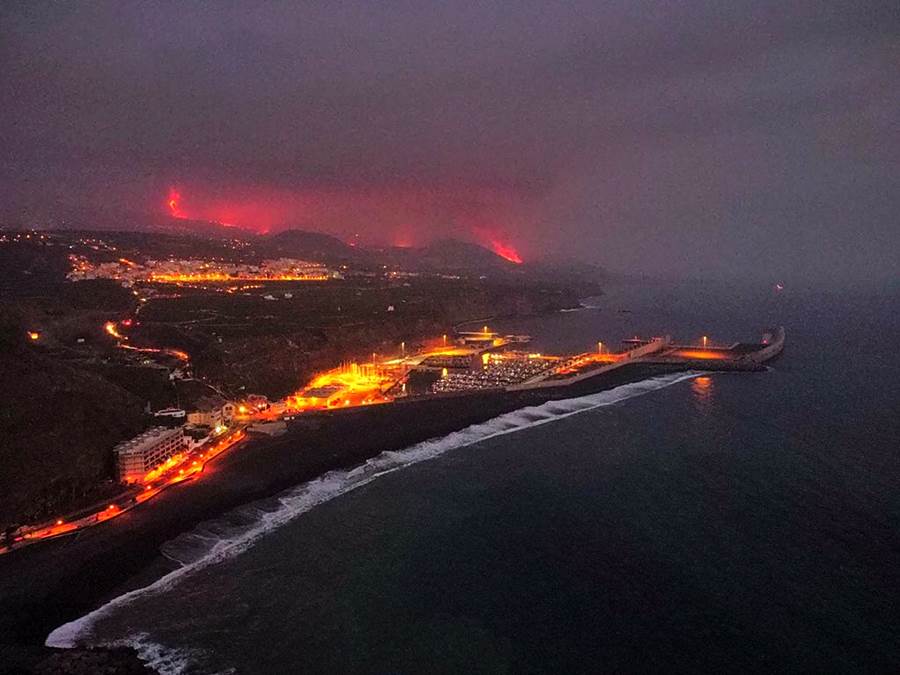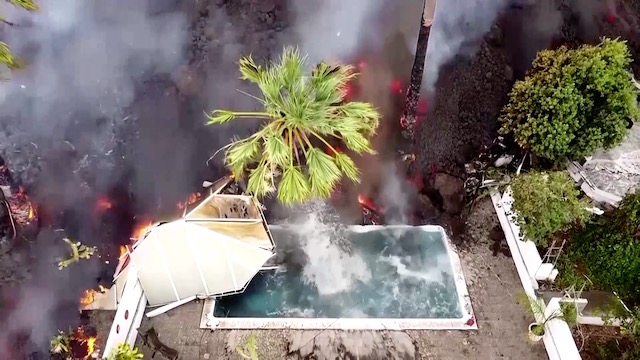Wed 29 September 2021:
Volcanologists say lava from an erupting volcano in the Canary Islands has reached the ocean, sparking fears that hazardous fumes would be released once the lava strikes the sea water.
The regional government of the Spanish archipelago had already announced a two-nautical-mile exclusion zone around where the lava was projected to enter the Atlantic, and inhabitants in the area were asked to stay at home.
“The lava flow has reached the sea at Playa Nueva,” the Canary Islands Volcanic Institute (Involcan) said on Twitter Tuesday night.
On September 19, the La Cumbre Vieja volcano, which spans a southern slope of La Palma, an island of 85,000 people, erupted, unleashing lava rivers that have steadily crawled towards the sea.
Residents of numerous parts of Tazacorte, a community near the coast, were warned to stay at home on Monday to prevent being harmed by toxic vapors released by molten lava reacting with water.
 The slow-moving lava flow, which had varied in speed over the previous three days and even halted at one point, was still roughly 800 meters (half a mile) from the coast on Tuesday afternoon, making it impossible to forecast when it will reach the sea.
The slow-moving lava flow, which had varied in speed over the previous three days and even halted at one point, was still roughly 800 meters (half a mile) from the coast on Tuesday afternoon, making it impossible to forecast when it will reach the sea.
Residents were warned to stay home due to “the possibility that there will be a small shock when the magma enters the sea water, and that this small shock causes vapours which can be toxic,” stressed Miguel Angel Morcuende, technical director of the Canary Islands Volcanic Emergency Plan (Pevolca).

According to experts, lava entering seawater will release clouds of toxic gas into the air, generating explosions and molten rock fragmentation similar to bullets.
According to the European Union’s Copernicus Earth Observation Program, the molten rock has scorched more than 258 hectares (640 acres) of land and destroyed 589 properties, but not all of them are residences.

The government had previously released 10.5 million euros ($12.3 million) in aid for the eruption’s victims, mostly to help those whose homes had been submerged in lava.
“Inhalation or contact with acid gases and liquids can irritate the skin, eyes and respiratory tract, and may cause breathing difficulties, especially in people with pre-existing respiratory diseases,” Involcan warned.
More than 6,000 people have been forced to flee their homes as a result of the eruption, although no one has been killed or injured as of yet.
The island of La Palma is mostly supported by banana farming and tourism.
(with agency)
_____________________________________________________________________________
FOLLOW INDEPENDENT PRESS:
TWITTER (CLICK HERE)
https://twitter.com/IpIndependent
FACEBOOK (CLICK HERE)
https://web.facebook.com/ipindependent
Think your friends would be interested? Share this story!






